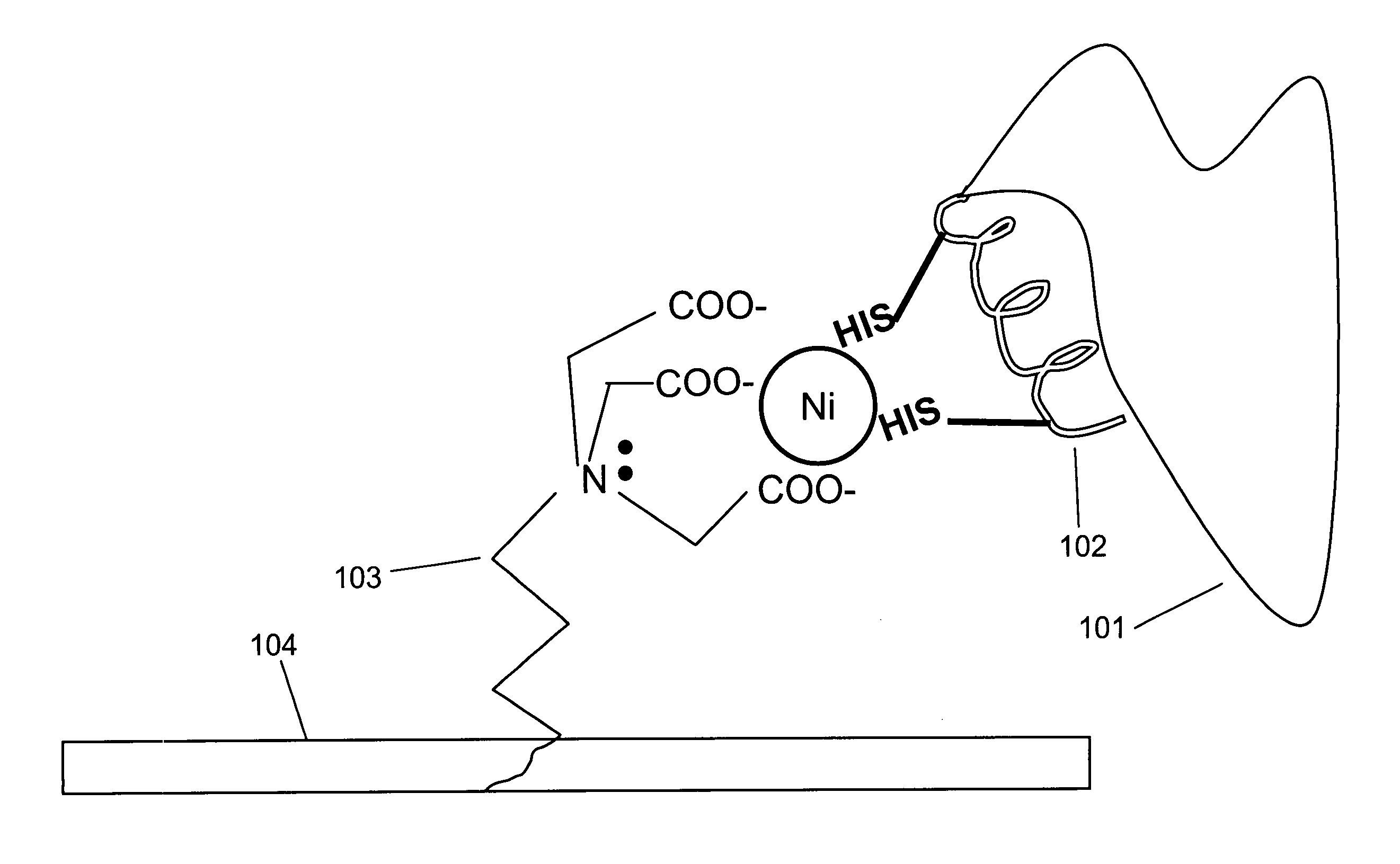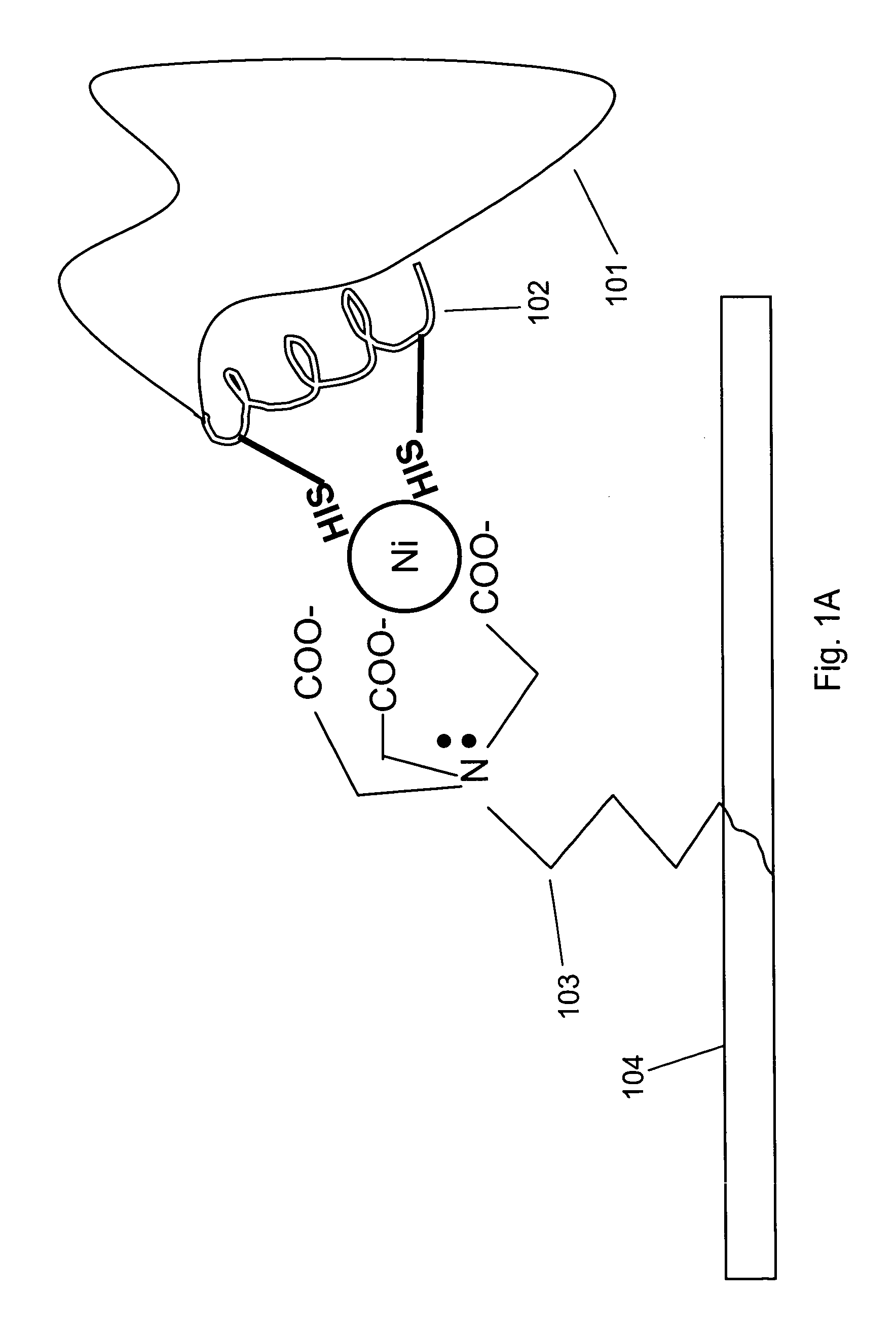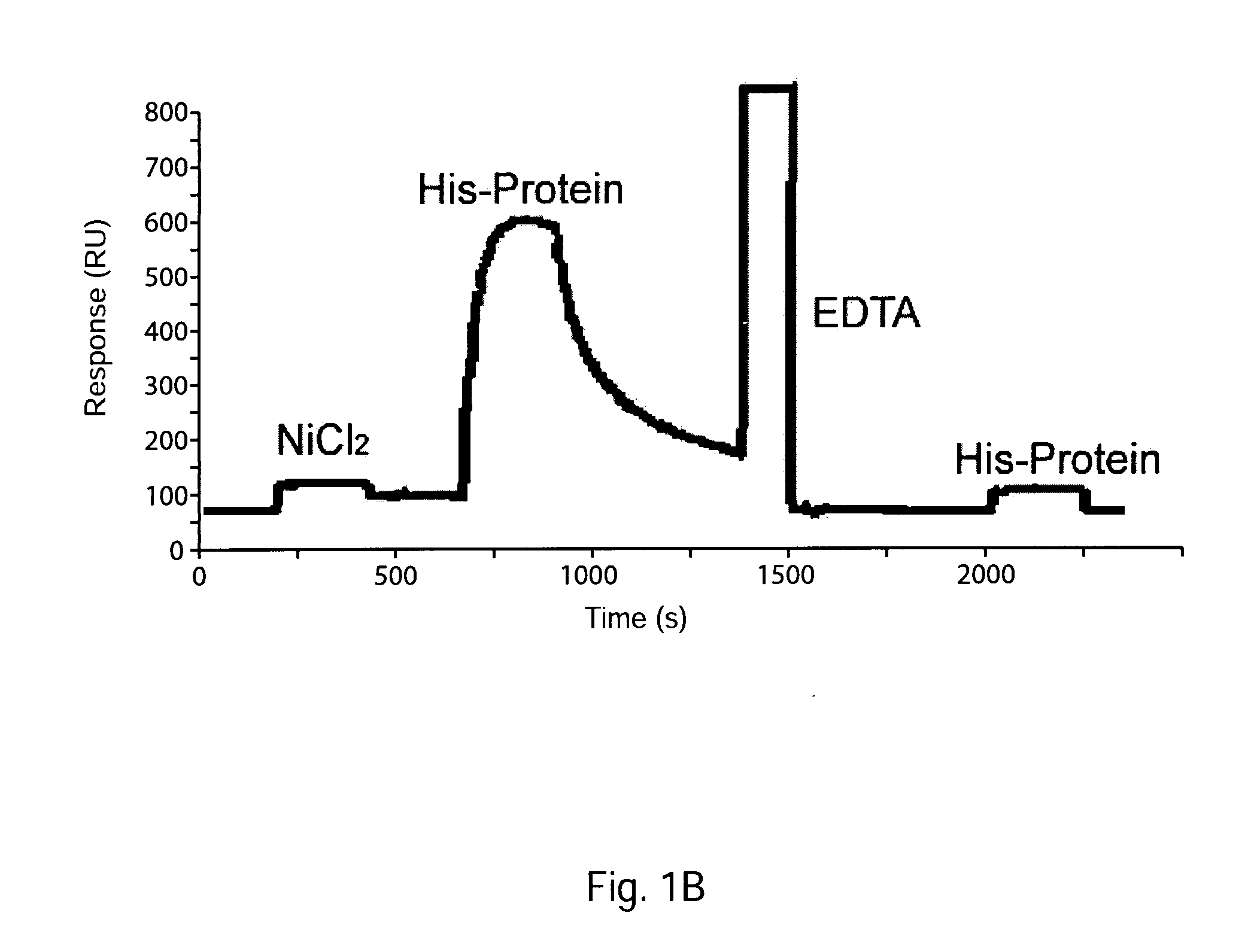Protein engineering strategies to optimize activity of surface attached proteins
- Summary
- Abstract
- Description
- Claims
- Application Information
AI Technical Summary
Benefits of technology
Problems solved by technology
Method used
Image
Examples
example 1
Multiple Surface Coupling Domains Provide Higher Binding Affinity
[0098]Interaction of a protein bearing a single His-6 tag with nickel-NTA (Ni2+-nitrilotriacetic acid) is schematically illustrated in FIG. 1 Panel A. NTA 103 is immobilized on surface 104. Two histidine residues from His-6 tag 102 on protein 101 participate in coordinating the nickel ion.
[0099]Surface plasmon resonance detection of the interaction between such a singly His-tagged protein and a sensor chip bearing immobilized nickel-NTA is illustrated by the BIAcore® sensorgram showed in FIG. 1 Panel B (sensorgram from home (dot) hccnet (dot) nl / ja (dot) marquart / Sensorchips / NTA / NTA (dot) htm). From the t1 / 2 of the decay, koff for the dissociation of the singly tagged protein is estimated to be 1×10−2s−1.
[0100]Nieba et al. (1997) “BIACORE analysis of histidine-tagged proteins using a chelating NTA sensor chip” Analytical Biochemistry 252:217-228 describe BIAcore® analysis of the interaction between various His-tagged p...
example 2
Recombinant Enzymes
[0101]A vector for expression of a recombinant Phi 29 polymerase with three different surface coupling domains was constructed and is schematically illustrated in FIG. 2. An N62D mutation was introduced into wild-type Phi 29 to reduce exonuclease activity. As will be appreciated, the numbering of amino acid residues is with respect to the wild-type sequence of the Phi 29 polymerase, and actual position within a molecule of the invention may vary based upon the nature of the various modifications that the enzyme includes relative to the wild type Phi 29 enzyme, e.g., deletions and / or additions to the molecule, either at the termini or within the molecule itself. GST (glutathione-S-transferase), His, and S tags were added as surface coupling domains. Sequences of the resulting tagged N62D Phi 29 enzyme and of the vector are presented in U.S. patent application 60 / 753,670 entitled “Polymerases for nucleotide analogue incorporation” by Hanzel et al., filed Dec. 22, 20...
PUM
| Property | Measurement | Unit |
|---|---|---|
| Fraction | aaaaa | aaaaa |
| Fraction | aaaaa | aaaaa |
| Fraction | aaaaa | aaaaa |
Abstract
Description
Claims
Application Information
 Login to View More
Login to View More - R&D
- Intellectual Property
- Life Sciences
- Materials
- Tech Scout
- Unparalleled Data Quality
- Higher Quality Content
- 60% Fewer Hallucinations
Browse by: Latest US Patents, China's latest patents, Technical Efficacy Thesaurus, Application Domain, Technology Topic, Popular Technical Reports.
© 2025 PatSnap. All rights reserved.Legal|Privacy policy|Modern Slavery Act Transparency Statement|Sitemap|About US| Contact US: help@patsnap.com



